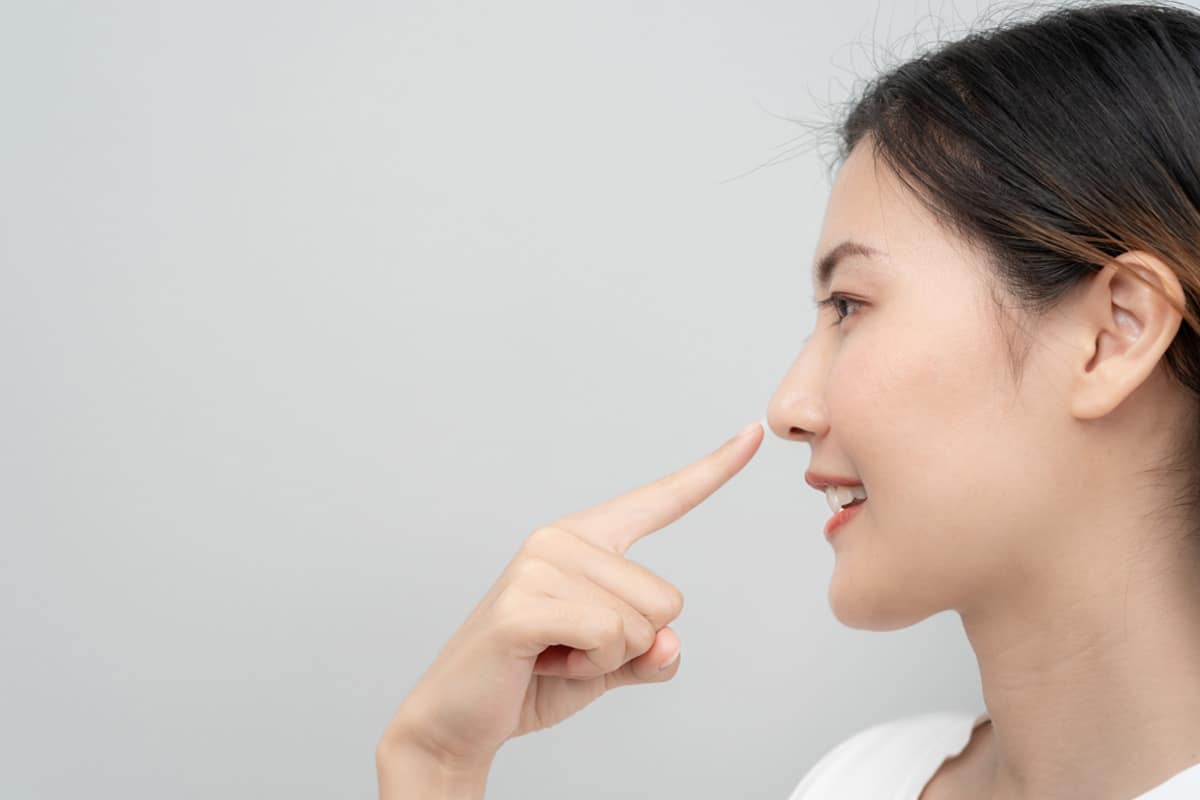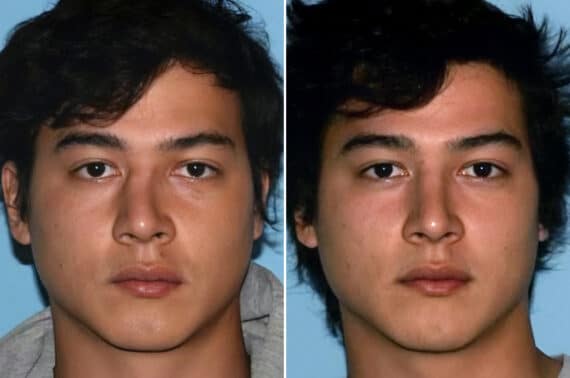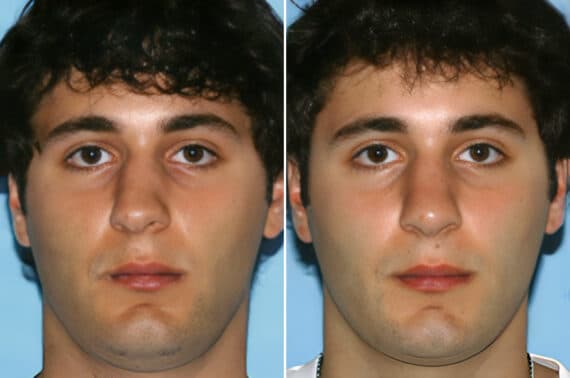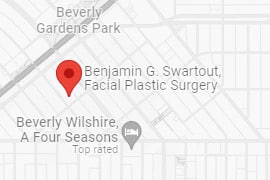Wondering what rhinoplasty recovery week by week really feels like? Nose surgery is more than a before-and-after; it’s a carefully planned healing process that shapes results over time. In the first weeks, swelling settles, breathing improves, and your nasal shape begins to reveal itself, setting the tone for your rhinoplasty journey.
Think of healing as a timeline, not a leap. Understanding typical nose job recovery time helps you plan work, workouts, and social moments without surprises. As milestones stack up, splints off, swelling down, confidence up, you’ll see steady progress and learn what to expect next, so each week feels purposeful and encouraging.

How Many Weeks Does Rhinoplasty Surgery Take to Heal?
Most patients feel socially presentable within 2–3 weeks, but complete healing from nose surgery is gradual. Early swelling resolves in the first month, yet subtle refinement continues as skin, cartilage, and soft tissues remodel. For any type of rhinoplasty, expect visible improvements by 6–8 weeks, functional breathing gains sooner, and tip definition maturing over months. Many surgeons describe rhinoplasty healing stages: acute recovery (days 1–7), early normalization (weeks 2–4), structural settling (weeks 6–12), and final polishing (months 6–12). Final results typically appear between 6 and 12 months. Patience pays off with a more refined, balanced profile.
Stages of the Rhinoplasty Recovery Process
Understanding your rhinoplasty recovery time becomes far less intimidating when you follow a clear week by week breakdown. A structured rhinoplasty recovery timeline highlights how swelling subsides, breathing improves, and your results gradually refine, helping you anticipate each milestone with confidence.
The First Week: Initial Recovery Period
During the first week, most patients focus on rest and protecting the surgical area as initial healing begins. Bruising and swelling are common, and you may notice nasal congestion that makes breathing through the nose difficult. Keeping your head elevated, using cold compresses as directed, and limiting activity all help reduce inflammation. A nasal drip pad is often worn under the nostrils to catch any light discharge and keep the area clean. While this stage can feel restrictive, following your surgeon’s instructions closely lays the groundwork for a smoother recovery in the weeks ahead.
Week 1
Second Week: Cast or Splint Removal
By the second week, you are still in the early stages of recovery, but progress becomes more visible. The nasal splint or cast is usually removed during this time, allowing you to see the initial contours of your nose. Although swelling and discoloration may persist, many patients feel comfortable returning to light social activities. Your surgeon will check for proper alignment and cleanliness around the nostrils, ensuring everything is healing as expected. Gentle care, avoiding pressure on the face, and continuing to follow post-operative instructions help support long-term results as the nose continues to settle.
Week 2
Third Week: Swelling and Bruising Subsides
Around 3 weeks after surgery, many patients notice a meaningful reduction in swelling and the fading of most bruising. Although subtle puffiness may linger, the nose begins to look more refined and closer to its temporary shape. You may feel more confident resuming everyday tasks or spending time with others, as noticeable discoloration tends to diminish by this point. It is still essential to avoid strenuous activity or accidental bumps to the area, since underlying tissues remain delicate and continue to settle. Keeping up with follow-up appointments and gentle care supports smoother healing during this important phase.
Week 3
Fourth Week: Return to Normalcy
By the fourth week, everyday life typically becomes easier as swelling continues to settle and facial appearance looks more natural. Many patients feel comfortable returning to work, school, or casual social interactions without drawing attention to residual changes. While the nose is still healing internally, most visible bruising has faded, and swelling is often limited to subtle areas around the bridge or tip. Light activities and short errands are usually permitted, but any strenuous exercise, heavy lifting, or contact sports should remain on hold. Sleeping with your head elevated and avoiding sun exposure helps safeguard your results as the nose continues adjusting.
Week 4
Fifth Week: Visible Results Appear
By the fifth week, many patients begin noticing more obvious improvements in nasal definition and contours. Although some swelling may still persist, the overall shape looks closer to the anticipated outcome, especially around the bridge and tip. Friends or coworkers who were unaware of the surgery often cannot detect signs of recent healing at this stage. You may start feeling more confident in your appearance during everyday interactions or while taking photos. It’s still essential to avoid contact sports, heavy lifting, and any activity that could impact the nose, as deeper tissues require additional time to fully stabilize.
Week 5
Sixth Week: Gradual Return to Exercise
By the sixth week, many patients receive clearance to slowly reintroduce light exercise such as walking, gentle stretching, or low-impact cardio. Although the nose is more stable than in earlier weeks, internal healing is still ongoing, so activities involving bending, heavy lifting, or sudden movements should be avoided. Paying attention to any feelings of pressure or discomfort helps prevent complications. It’s common to resume regular routines in stages rather than all at once, with your surgeon guiding what is appropriate. By easing back into physical activity carefully, patients protect the structural changes and support long-term surgical outcomes.
Week 6
Seventh Week: Increased Nose Sensation
As you enter the seventh week, subtle changes in sensation around the nose become more noticeable. Some patients experience tingling, numbness, fading, or light sensitivity as nerve endings gradually awaken and adjust. These shifts are normal and reflect deeper healing beneath the surface. Although most external swelling has diminished, internal tissues are still stabilizing, so it’s important to remain cautious with physical contact and avoid accidental bumps. Gentle touch during cleansing or moisturizing may feel different than in earlier weeks, but these sensations typically improve with time. Ongoing patience supports a smoother transition into the later stages of recovery.
Week 7
Eighth Week: Subsiding of Minor Swelling
Entering the eighth week, lingering puffiness continues to taper off, especially around the nasal tip and bridge. Although most people no longer notice visible signs of surgery, you may still feel mild tightness or sensitivity when touching the area. These sensations are a normal part of internal healing, as underlying tissues and cartilage continue adapting to their new structure. Many patients grow more aware of the nose’s evolving shape during this stage and appreciate the gradual improvements from earlier weeks. Maintaining gentle care and avoiding unnecessary pressure remain important to preserve long-term results.
Week 8
Months 3 to 5: Residual Rhinoplasty Swelling
Several months after surgery, most visible swelling has diminished, but subtle changes continue beneath the skin. Residual swelling, especially near the nasal tip, can affect how defined the final shape appears. During this period, cartilage and soft tissue keep adjusting to their new positions, refining both symmetry and contour. Many patients notice gradual improvements in breathing and appearance as internal healing progresses. This stage rewards patience, as the nose becomes more refined and stable without drastic daily shifts. Consistent follow-up with your surgeon helps ensure everything is healing as planned and supports long-term aesthetic and functional outcomes.
Months 3-5
Months 6 to 12: Your Nose Job’s Final Results
Between six months and a year, the nose reaches its most refined state as swelling quietly diminishes, especially at the tip. Definition improves, shadows look more balanced in photos, and the profile stabilizes. Any small asymmetries may soften as scar tissue relaxes and cartilage settles. Breathing typically feels natural by this stage, provided internal support was maintained during surgery. While day‑to‑day changes are subtle, the cumulative effect is a polished, stable result that reflects the surgical plan. Continued sun protection and gentle care help preserve skin quality as you transition from recovery to long‑term maintenance.
Months 6-12
After the First Year: Long-term Healing
A year after surgery, the nose typically appears settled, but subtle refinements may still occur as tissues continue to soften and adapt. Minor firmness or sensitivity around the tip can gradually fade, and slight shifts in definition may emerge as scar tissue fully matures. This stage marks the completion of structural stabilization and highlights the lasting outcome of the procedure. While most changes are minimal, protecting the nose from injury and sun exposure remains important for maintaining results. Regular follow-ups ensure everything continues progressing well into the long term.
Beyond Year 1
Rhinoplasty Results: Before and After Pictures


*Each patient is unique and individual results may vary.
Potential Complications During Recovery Time
Even with a well-planned cosmetic surgery, recovery can present challenges that require attention and care. Knowing the most common risks helps patients recognize warning signs early and stay in close communication with their surgeon.
- Infection: Redness, warmth, or unusual discharge may signal infection and should be evaluated promptly.
- Excessive Swelling or Bruising: While some swelling is expected, persistent or worsening inflammation may indicate an underlying issue.
- Breathing Difficulties: Nasal blockage or changes in airflow may require medical guidance to ensure proper healing.
- Scar Tissue Formation: Internal or external scarring can affect appearance or nasal function if not monitored.
- Asymmetry or Irregular Healing: Uneven settling or shape concerns may emerge as tissues continue to heal.
- Prolonged Numbness or Sensitivity: Sensory changes usually fade, but extended discomfort should be assessed.
General Rhinoplasty Recovery Tips
A thoughtful approach to aftercare can make a noticeable difference in your overall comfort and healing pace. Following your surgeon’s instructions and adopting healthy habits helps encourage a smooth recovery while minimizing avoidable setbacks.
- Prioritize Rest: Getting plenty of rest supports your body’s ability to heal and reduces unnecessary stress on the surgical site.
- Protect Your Skin: Avoid sunlight whenever possible or use proper shielding to prevent discoloration and swelling in sensitive areas.
- Sleep Elevated: Keeping your head raised helps decrease swelling and enhances comfort during early healing stages.
- Avoid Strain: Refrain from heavy lifting, bending, or strenuous exercise until your surgeon approves.
- Stay Hydrated and Nourished: Balanced meals and adequate fluids promote tissue repair and overall wellness.

Secure Your Safe Procedure Experience with Dr. Swartout
Join our satisfied clients who’ve experienced safe, effective treatments.
Choosing the Best Surgeon for Your Rhinoplasty Procedure
Selecting an experienced specialist is essential for a smooth recovery, predictable results, and long-term function. Skillful technique, precise structural support, and thoughtful follow-up help guide your rhinoplasty recovery journey from week one through the final reveal. An accomplished plastic surgeon considers aesthetics and airflow—protecting both form and function within the broader field of facial plastic surgery.
As a Harvard-educated, Albert Einstein–trained expert in rhinoplasty, revision rhinoplasty, and ethnic rhinoplasty, Dr. Benjamin Swartout has published extensively and teaches nasal surgery at Harbor UCLA. He focuses on durable techniques that support natural contours and healthy breathing. Ready for a personalized rhinoplasty consultation? Call us at 310-275-0704 or visit our contact page to schedule a consultation.

